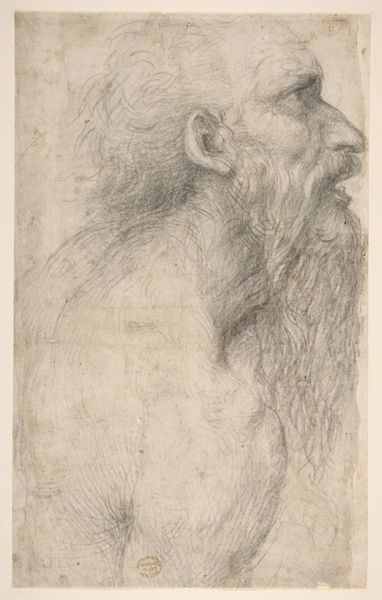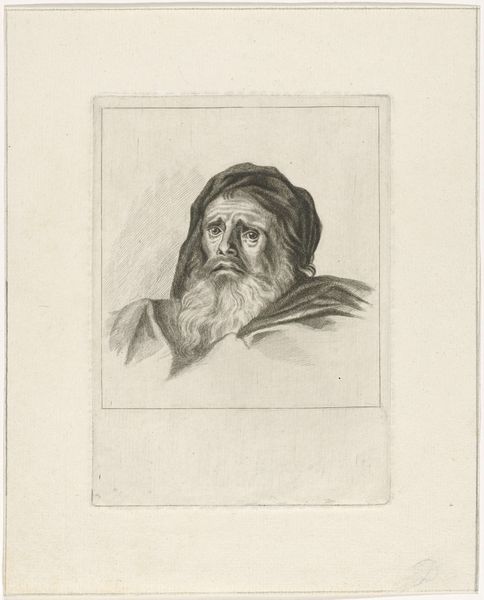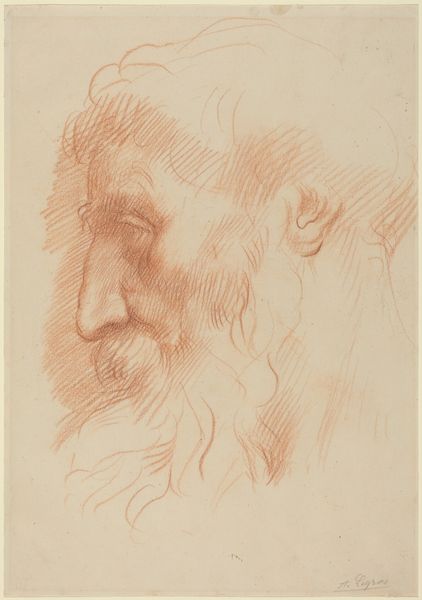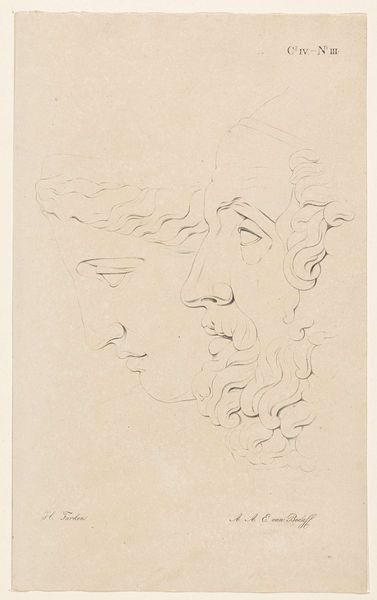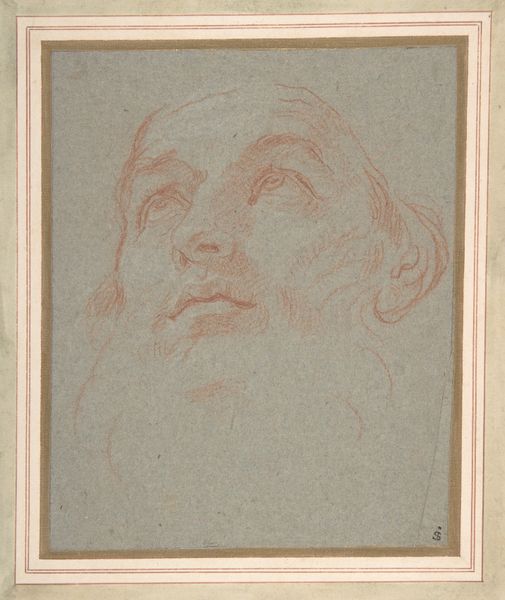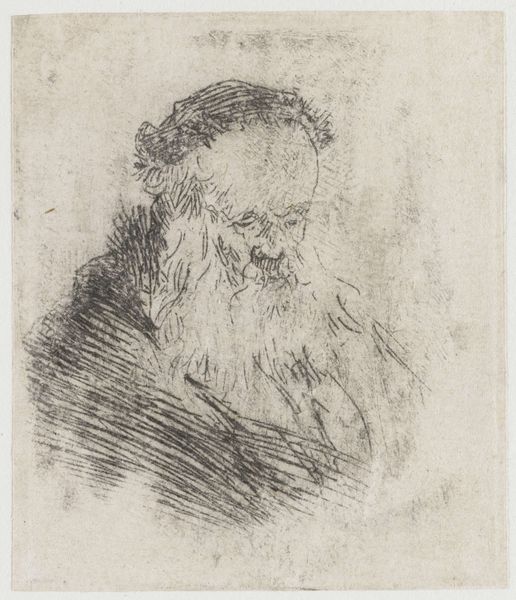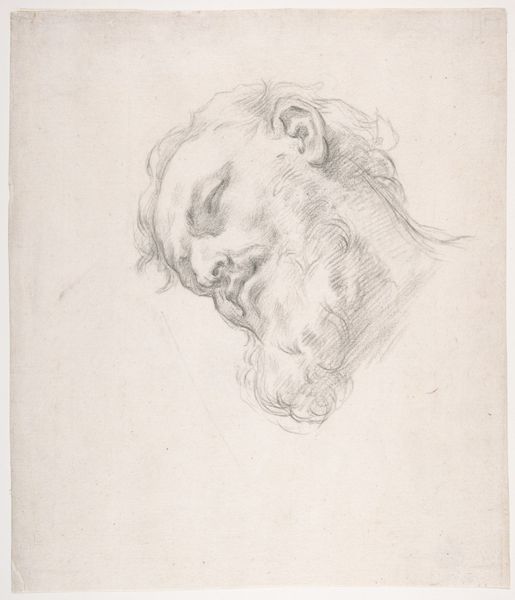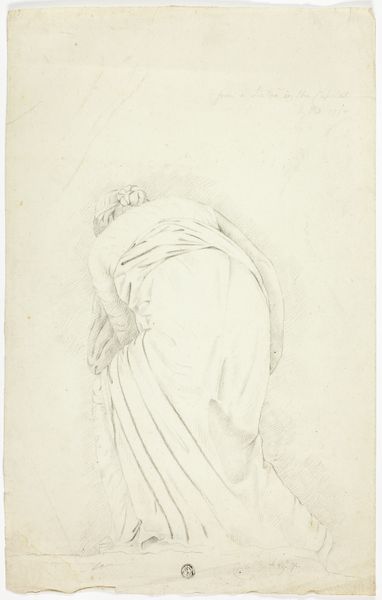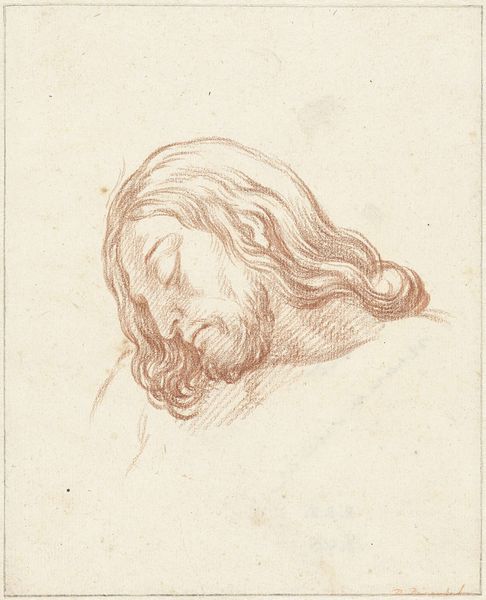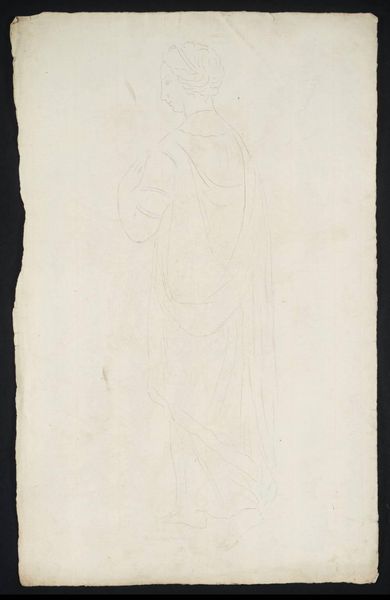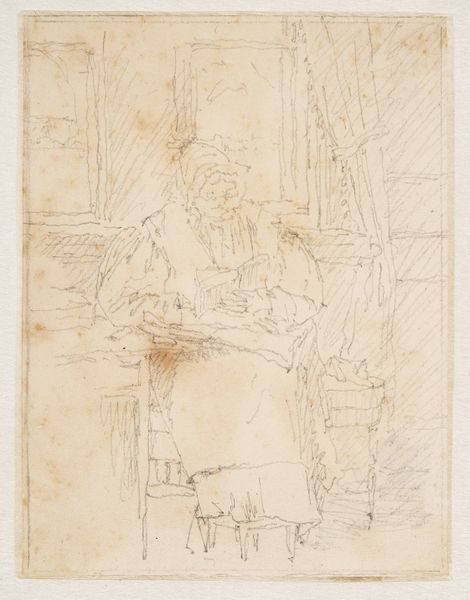
drawing, red-chalk, paper
#
pencil drawn
#
drawing
#
amateur sketch
#
toned paper
#
light pencil work
#
16_19th-century
#
red-chalk
#
pencil sketch
#
incomplete sketchy
#
paper
#
personal sketchbook
#
german
#
ink drawing experimentation
#
sketch
#
sketchbook drawing
#
pencil work
Copyright: Public Domain
Curator: This is a pencil and red chalk sketch titled "Männlicher Studienkopf im Umriss," or "Male Study Head in Outline," by Bernhard Neher the Younger. It's currently held in the Städel Museum's collection. Editor: Wow, it's... hauntingly simple. Like a faded memory. The lines are so delicate, almost ethereal, giving it a real sense of quiet contemplation, doesn't it? A bit melancholy even. Curator: Indeed. Neher’s studies often reflect the artistic atmosphere of his time. We have to remember the role of academic drawing in 19th-century art education. Such studies were crucial in training artists. They copied ancient sculptures and then started doing their own from life. Editor: So this was part of his apprenticeship? It feels less like an academic exercise and more like a private meditation on masculinity. All those unfinished lines makes you fill in the gaps—sort of like interpreting a half-remembered dream. The face and beard, especially—the curve of his downcast eyes, it feels deeply personal. Curator: Absolutely, and we can see him experimenting, can’t we? With line weight, with shading. It offers a fascinating glimpse into the artist's process. The medium contributes so much, the red chalk gives it a warmer tone—bringing the study head to life in a natural way. It allows the lines to flow much smoother. Editor: Definitely. It reminds me of a portrait capturing both strength and vulnerability in the sitter's stoic expression. Though only a sketch, this drawing seems so intimate. Curator: Its open display also speaks to the democratization of art viewership that began in the 19th century—studies such as these began being more readily available to view, not hidden in artist studios, where the public can scrutinize an artwork’s beginning just as attentively as it examines the "finished" piece. Editor: So true. It's amazing how much emotion can be conveyed with so few lines. Thanks, Bernhard, for sharing! Curator: Precisely, and I appreciate having shared it with you!
Comments
No comments
Be the first to comment and join the conversation on the ultimate creative platform.
